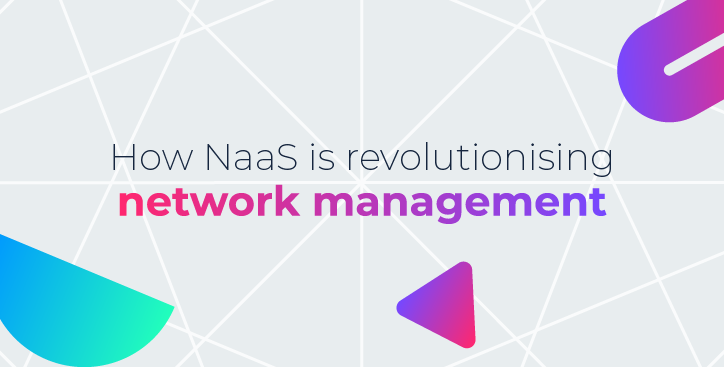Network-as-a-Service (NaaS) is revolutionising network management by helping businesses take greater control of the provisioning, payment and management of network services.
In our on-demand webinar, “Unlocking the power of network automation”, Lisa Wright took a deeper look at how network automation, SDN (Software Defined Networking) and NaaS are shaping the future of networking and delivering value for enterprises.
So, what is network automation?
Traditionally, networks were managed by manually configuring individual devices, but this process is no longer sustainable in the modern world.
As technology has progressed, networks have grown larger and become more complex to manage.
This is where network automation has proved to be a great differentiator, using tools and scripts to automate repetitive tasks such as device configuration, troubleshooting, and even security updates.
NaaS takes this a step further by delivering network services on demand, akin to subscribing to a streaming or public cloud service.
NaaS ensures IT networks can cope with the growing complexity of technology systems and are able to rapidly adapt to changing circumstances, without compromising on security or efficiency.
Advancing to SDN and APIs
In the evolving technological landscape, Software Defined Networking (SDN) and Application Programming Interfaces (APIs) are reshaping the way technology is designed, deployed, and managed.
Together, they are transforming the way enterprises operate their networks, driving flexibility, efficiency, and innovation.
Beyond streamlining operations, API's foster interconnected ecosystems. SDN and APIs enable rapid service provisioning, simplified management and innovative app creation, revolutionising flexible and efficient networking.
Empowering IT professionals
Network automation is not here to replace IT professionals but to empower them.
By adopting network automation, NaaS and SDN technology, IT professionals are liberated to focus on more strategic work, while ensuring networks run smoothly and securely.
The benefits of network automation include:
- Efficiency: By automating repetitive tasks, efficiency is enhanced, saving time and reducing errors.
- Scalability: NaaS enables rapid deployment of new services, where networks can grow alongside businesses.
- Cost-effectiveness: Automation reduces operational expenses, freeing up resources for other projects.
- Agility: Through SDN and API’s, networks become more agile, adapting quickly to changing business needs and technological advancements.
- Security: Automation enforces consistent security policies, detects threats rapidly, and secures private networks, improving overall network security.
Legacy networks are falling short
There are many obstacles that organisations may face when transitioning to a digital first approach and interconnecting multiple applications. In the webinar, Lisa addresses two primary challenges impacting enterprises:
- Extended provisioning times: Stack complexity can result in lengthy commercial negotiation times where organisations may regularly encounter lead times of weeks to months.
- Manage cloud complexity: With an increased adoption of hybrid and multi-cloud, where potentially hundreds of software applications may be in use across multiple locations, integrating and managing applications becomes more challenging.
As technology continues to evolve, it becomes increasingly evident that traditional network architectures cannot provide the services enterprises need. By adopting network automation and NaaS strategies, enterprises can future-proof their networks, drive innovation, and securely scale their business.
Watch the full webinar for more insight on:
- The evolution of network automation
- The rise of Software Defined Networking and API integration
- The migration of network automation from an enterprise perspective



.jpg)





.jpg)
